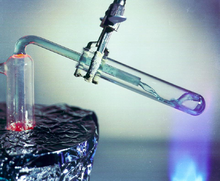What Is LFTR? The Safe Nuclear Energy
Nuclear fusion is considered by many to be the holy grail of power generators, but until that process is ready, the planet is still forced to use the dangerous alternative, nuclear fission.
Chernobyl and Fukishima are but two examples of what can go wrong in today’s water cooled, solid fuel nuclear power plants fed rods of uranium.
What if there were a safer alternative that used a fuel source more stable, more common, produced less waste, more efficient, and didn’t contain the inherent threat of nuclear weapons?
Such a technology has existed for over 60 years but has been collecting mothballs. Let me introduce you to LFTR.
“Lifter”
LFTR stands for liquid thorium fluoride reactor and is pronounced “lifter.” This type of nuclear power is generated from Thorium. Thorium is nearly as abundant as lead in the earth’s crust, making it a very common metal. LFTR reactors use thorium dissolved into liquid form coupled with salts as a fuel source. This has some very distinct advantages over traditional nuclear reactors.
Most reactors today use solid rods of uranium that are split in a chain reaction that heats water and drives turbines. The major problem with this system is that when power to the plant is lost, water is no longer being pumped around the reactor to cool the dangerous fission reactions occurring within the reaction chamber, and this is what causes the infamous “nuclear meltdown.”
There are, of course, many backup generators that should switch on in case of power failure to prevent a meltdown and keep the reactor cooled, but as we saw in the case of Fukushima, if these backups fail, a meltdown is inevitable.
Liquid Thorium
With the liquid thorium system, a salt plug is kept frozen by pumping cold gas around a pipe containing the plug. If power to the station is lost, the fans keeping the plug frozen stop working, the plug melts, and the liquid thorium fuel drains into a backup chamber: there is no meltdown, and the crisis is averted. There is no need for human intervention as the system passively contains its own problem. Simple.
You may be asking yourself why this hasn’t been used more already? The answer is that when nuclear power was first being brought to the US government’s attention, LFTR was competing with the design traditional reactors used worldwide today. It wasn’t selected because the by-product of the traditional reactor was a uranium isotope that can be used for nuclear weapons. Washington made the no-brainer decision to produce nuclear power and nuclear weapons.
Today, China and India are at the forefront of LFTR development and implementation. The main reason the U.S. hasn’t begun retrofitting current reactors with LFTR systems is because of the belief that the cost of switching isn’t worth it.
This video below makes some very convincing points about LFTRs and is absolutely worth watching.
Comments
Tags: clean nuclear energy, LFTR, liquid fluoride thorium reactor, liquid thorium, nuclear fission, nuclear fusion, thorium energy
Trackback from your site.

